About Dissolution Baskets
Dissolution Baskets
Dissolution baskets are a precise and fragile piece of precision instrumentation and are easily damaged.
The standard mesh size is 40 Mesh (40 openings per linear inch of mesh), but many other sizes exist from 10 mesh, right up to 100 or 150 mesh which is incredibly fine and extremely delicate.
Meshes above this are generally not strong enough to support the basket shape and integrity. Finer meshes are possible by using a stronger supporting outer mesh..
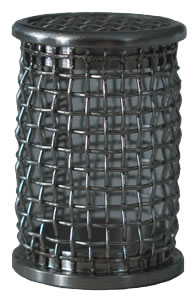 |
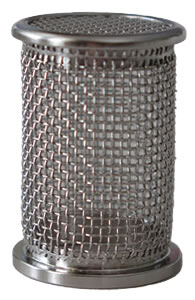 |
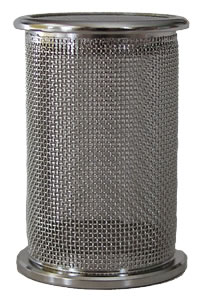 |
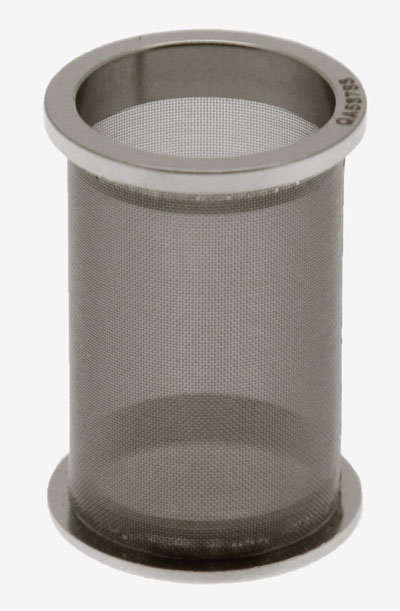 |
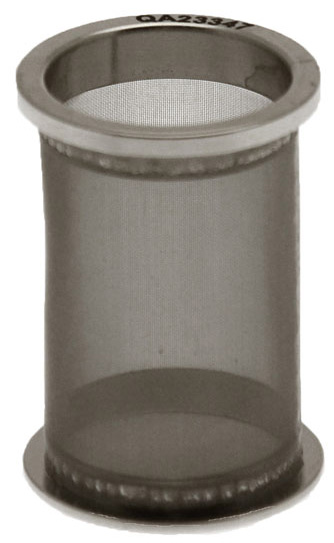 |
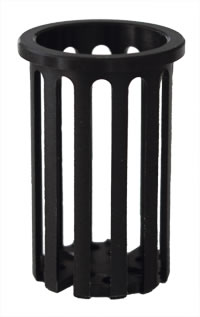 |
| 10 Mesh Basket | 20 Mesh Basket | 40 Mesh Basket | 100 Mesh Basket | 150 Mesh Basket | Suppository Basket |
Mini baskets for small volume applications, and special baskets for specific new drugs are also available.
There is a big variation in the quality of baskets available on the market but there are a number of issues to look out for that can make the difference between a short lifetime and long lifetime, and also the ability of the basket to pass the calibration procedures, particularly for wobble.
Simple Test - hold a basket rims between the thumb and forefinger on both hands and gently twist back and forth. If there is any movement in the mesh of the basket then there is a real potential that the basket will easily deform, and worse, that it will not pass the basket wobble test.
A good basket should be rigid with no movement. QLA/LabHut baskets are manufactured from sintered mesh - mesh that has been woven and then subjected to high temperature which actually welds the wires together at each cross-over point. This creates a rigid and non-moving mesh and will extend the life of the baskets considerably. Because the baskets are rigid, they will pass the wobble test far more easily.
Good baskets are reproducible baskets and reproducibility is the goal of any dissolution testing..
Serialisation
Baskets should be individually serialised and certified. Certification should always show the actual serial number and not a generic certificate. This means that the baskets are individually tested and QC tested to ensure that they not only meet the USP specifications but that each individual basket is correctly manufactured.
Serial numbers can be entered into the validation documents and also ensure that the same baskets can be used in the same vessel position every time.
Handling
Correct handling of baskets is important and avoids both physical damage and contamination.
Baskets should only be handled by the rims and never piked up by the mesh. Touching the mesh can not only deform it, but also risks depositing oils and contamination from the hands. A dented basket will also disrupt the media flow around the basket leading to erroneous results and is definitely not permissable.
Cleaning
It is essential that baskets are kept clean. They should be rinsed after use and if necessary a short time in an ultrasonic bath can be used to dislodge particles which are blocking mesh holes. Blocked mesh decreases media flow and can lead to lower results. Baskets should then be dried prior to storage or re-use. Never introduce a dosage form into a wet basket.
Storage
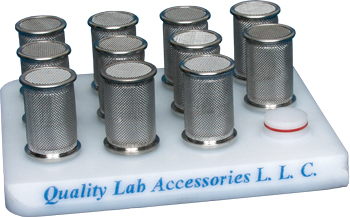 Baskets should also be stored properly and not allowed to simply roll around a drawer where they can easily be damaged and become mis-shapen.
Baskets should also be stored properly and not allowed to simply roll around a drawer where they can easily be damaged and become mis-shapen.
The use of a simple basket storage rack, which is both inexpensive and easy to use, is the best way to ensure that baskets maintain their integrity during storage.



